Shapes make wonderful images but our eyes see in three dimensions, and the camera doesn’t. The camera only sees things in a flat two-dimensional view, which can be pretty boring. How do we give the feel of form to shapes in our photographs? We can only do this by variations of light and shade, which give the illusion of depth. Diffused light does this better than really hard light.
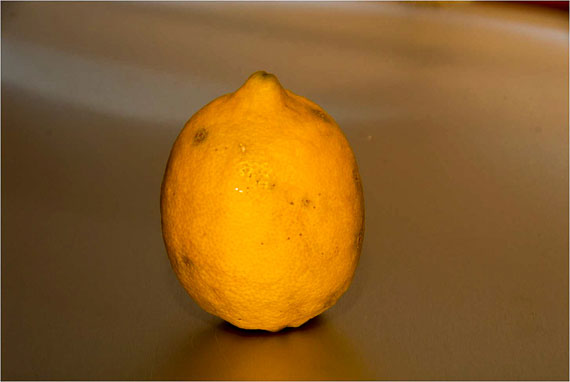
Light coming straight from the front creates a flatter image.
Look at this lemon as an example. (It’s not a great lemon, but it’s off our tree and just what I had around.) The light is coming straight from the front and the picture looks flat and two-dimensional.
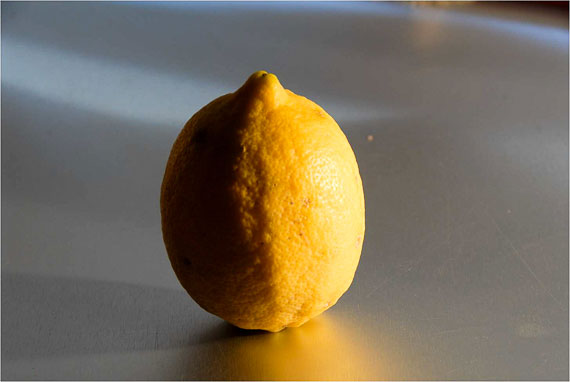
Light from the side creates depth in this image.
If we light it from one side we can immediately see that the lighting gives us this perception of depth. This example may be overdoing a bit to make the point, because the light is too strong. The harsh light is what creates extreme contrast levels.
If we use a more diffused form of light we still get the perception of depth but it’s much softer and gentle.
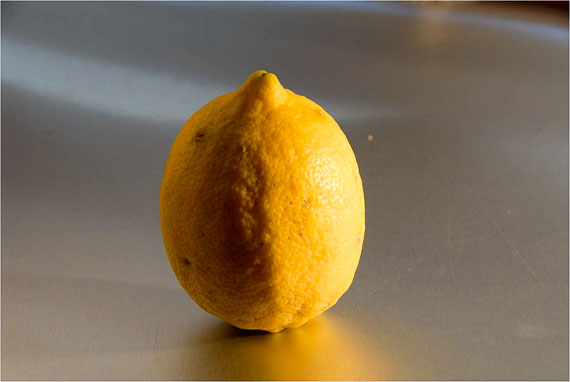
Diffused light from the side creates depth with less contrast.
This shows us the importance of light and shade for giving a sense of depth in our pictures. Whenever we are about to take a photo, we should always reflect on what I call the lemon effect.
Here are a few more examples to emphasize my point:
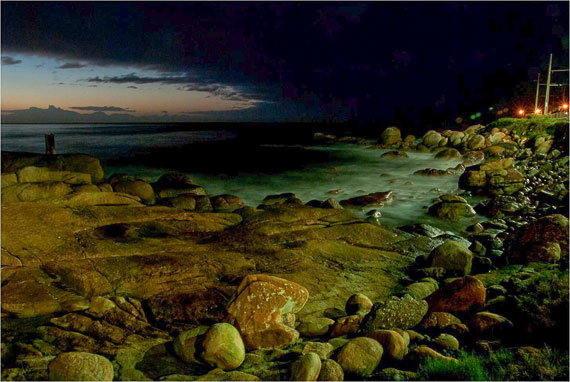
Light cast from the side along the shoreline.
In this instance, there is artificial light coming from the right hand side, the flood lighting on the railroad track, and it illuminates the shoreline rocks in delightful detail.
But light doesn’t have to come from the side to help give the illusion of depth. In this example, it is coming from behind the photographer, and because the sun is low on the horizon, the angled light gives us the desired effect of more depth.
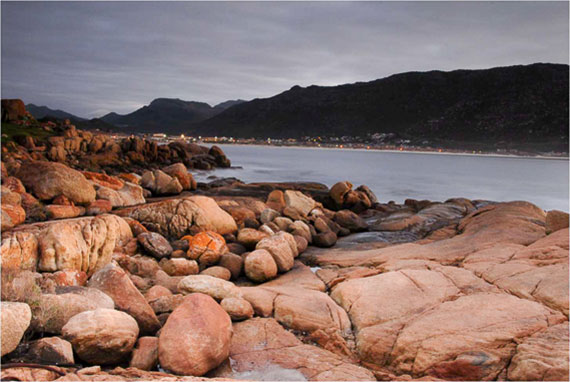
Low-angled light from behind the photographer creates a feeling of depth.
In this example, we have natural light shining on the different parts of the mountain, again giving us the feeling of depth.

Light variations on the mountain show another way to create depth.
The Battle of Britain memorial in the Thames Embankment in London gives us the opportunity to take really dramatic pictures when we make use of the light angle in the morning sun. The harsher light generates higher contrast on the memorial, losing some detail in the dark shadows, but highlighting other parts we see clearly.
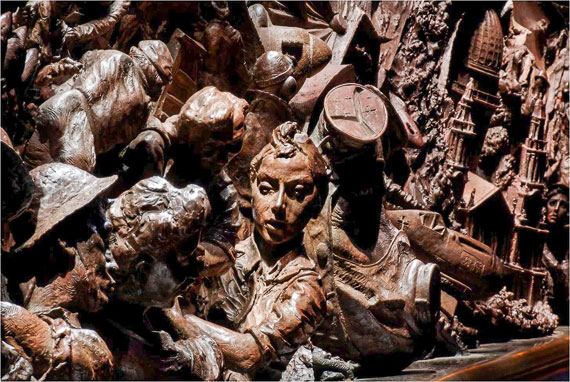
Bright morning light creates depth and contrast.
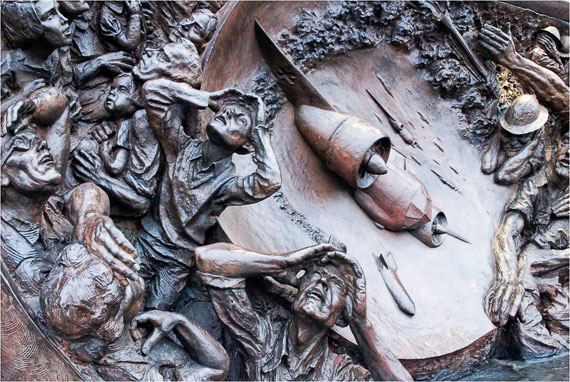
Low evening light creates an images with less contrast.
The time of day is obviously really important, as we need low sun to give us the best lighting effect.
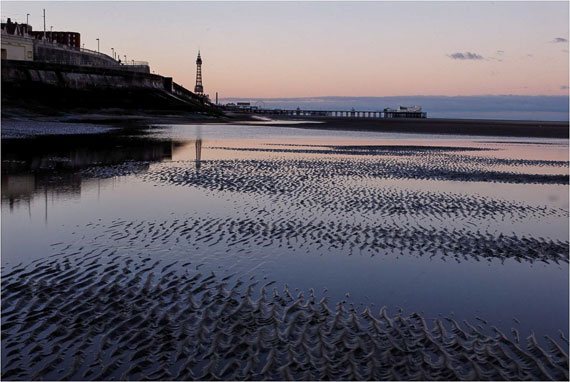
Dim early morning light ideal for capturing depth in landscapes like this one.
The early morning sun illuminates each and every sand ripple, while the low angle of this image adds to the effect.
Photography is all about light and how we use it. Remember the lemon effect and how you can make best use of it in your photography.
About the author:
Roger Lee is a Johannesburg-based photographic trainer and cruise ship speaker on Smartphone Photography. He runs a “Enjoy Your Camera” course and has eBooks for people who don’t want to drown in detail and just take good images at www.camerabasics.net and www.smartphone.org.za.
Go to full article: How to Capture Images with Depth and Form
What are your thoughts on this article? Join the discussion on Facebook
PictureCorrect subscribers can also learn more today with our #1 bestseller: The Photography Tutorial eBook
The post How to Capture Images with Depth and Form appeared first on PictureCorrect.
from PictureCorrect https://ift.tt/369eSCM
via IFTTT






0 kommenttia:
Lähetä kommentti